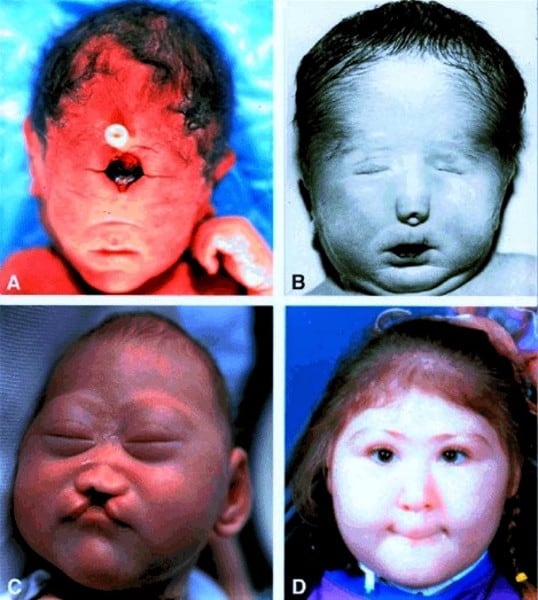The notochord is formed from mesoderm. It induces the overlying ectoderm to form the neural plate. The ectoderm that forms the neural plate is called neuroectoderm. The neural plate undergoes folding to eventually form a neural tube. The cavity of the neural tube is called the neural canal, it gives rise to the ventricles of the brain, the cerebral aqueduct and the spinal canal. The cranial and caudal openings of the neural tube , called neural pores close by days 24-27. Folic acid supplementation prevents open neural tube defects, which happen when the above process is hampered.
The neural tube develops three primary vesicles which give rise to five secondary vesicles as follows:
| Primary Vesicles | Secondary Vesicles | Derivatives |
|---|---|---|
| Prosencephalon (forebrain) | Telencephalon | Cerebral hemispheres, preoptic area, basal ganglia |
| Diencephalon | Thalamus, hypothalamus, epithalamus and subthalamus, optic nerve cranial nerve II, retina, neurohypophysis | |
| Mesencephalon (midbrain) | Remains the same | Midbrain |
| Rhombencephalon (hindbrain) | Metencephalon | Pons, cerebellum |
| Myelencephalon | Medulla |

The spinal cord develops from the neural tube. A few specialized cells from the neural plate form the neural crest. The neural crest gives rise to primary sensory neurons, postganglionic autonomic neurons, sensory and autonomic ganglia, melanocytes, aorticopulmonary septum, endocardial cushions, adrenal chromaffin cells in the adrenal medulla, cranial nerves, Schwann cells, pia and arachnoid mater, skull bones, pericytes, myenteric and Auerbach plexuses, odontoblasts as well as bones and cartilages derived from the pharyngeal arches.
Sign up for free to take 2 quiz questions on this topic